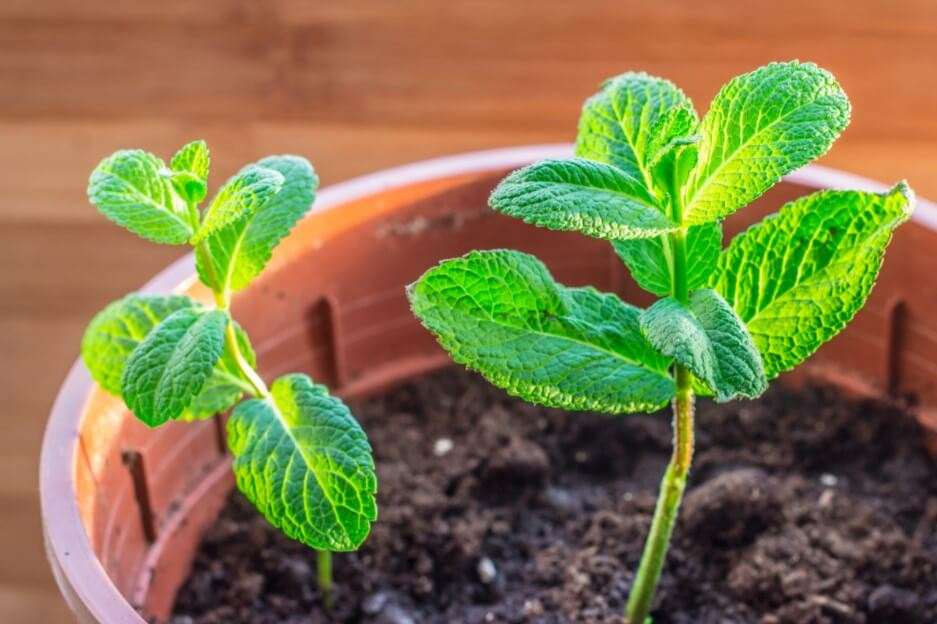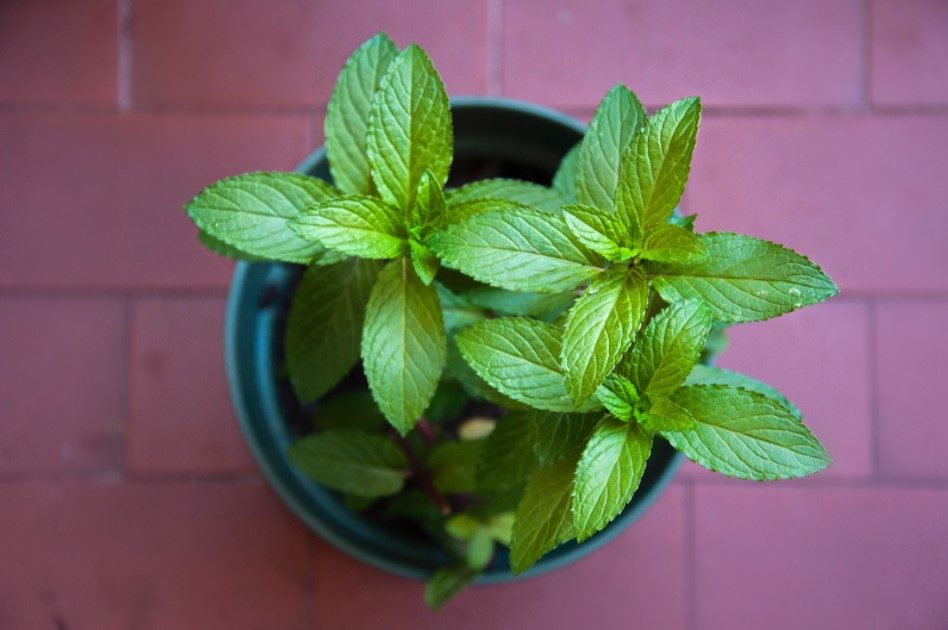Mint is a perennial plant that belongs to the Lamiaceae family. This plant is one of the most popular herbs used for various purposes, from added to dishes or used in manufactured products, such as gum, candy, toothpaste, etc. Adding this herb in cooking will help add flavor and aroma.
In this post
Mint Benefits
This herb is already used throughout history for medicine. That is because various types of mints offer plenty of antioxidants and potential health benefits.
The potential benefit of mints includes but not limited to managing gastrointestinal problems, soothing common cold symptoms, reducing symptoms of asthma, decreasing breastfeeding pain, masking bad breath, improving brain function, and so on.
This article will discuss everything you need to know about mint and how to grow mint.
Read along so that you can plant this fresh and cooling herb successfully in your garden.
Varieties of Mint
Mint has a lot of varieties, although most types require similar growing conditions. These plants live well under full sun and prefer moist but well-draining soil.
Mint plants also tend to be invasive, which means you will need to care and often make sure that their growth is under control.
Another important thing to consider is that when you are planning to plant different varieties of mint in the garden, make sure to plant them as far apart as possible.
This is because several mint varieties usually cross-pollinate with other types of mint, resulting in the plants losing their integrity and producing unfavorable flavors or scents.
Each variety has a different flavor and scent, which can vary greatly between varieties. Also, not all mint is a great addition to your dishes as some of them are used for their aromatic properties only or aesthetic appearance.
Meanwhile, other types of mint are usually considered a medicinal herb. Thus, before deciding which varieties to grow, here are some varieties commonly planted in the garden.
- Peppermint
- Pineapple mint
- Spearmint
- Chocolate mint
- Apple mint
- Lavender mint
- Ginger mint
- Red Raripila mint
- Grapefruit mint
- Pennyroyal
- Basil mint
- Liquorice mint
- Horsemint
- Catmint
- Chewing Gum mint
- Orange mint
- Calamint
- Watermint
- Corn or Field mint
Those are some mint varieties commonly planted in the garden. Once you know some of them, the next thing to discuss is how to plant mint in your garden.
How to Plant Mint

Before you’re considering planting mint indoors or outdoors, you need to decide whether you want to plant from seed or cutting. Mint seed is more difficult to start since it has a low germination rate.
Additionally, the plants may be growing not uniformly. A few plants may have different taste than expected.
Meanwhile, growing mints from cuttings is a better option as you will have a better idea of how it will taste and smell like by rubbing their leaf.
Growing mint from cutting is also easier and faster. It is a better option if you want to know how the mint plant’s smell and taste might like.
Before planting, understand that mint is a creeping plant that can spread rapidly.
Therefore, if you don’t want this plant to take over the whole garden, make sure to plant it in a container or plotted area.
Now, let’s jump to how to plant mint for each method.
1. From Seeds
First, start by sowing mint seed ¼ inch or 6 mm deep in the place where you want to plant them. It can be in the containers or directly in your garden soil. Since the seed is tiny, you can space them when planting them or separate them once germinated within 10 to 15 days.
Keep the planting location warm and the soil should be slightly moist, but make sure that it is not too wet or soggy. You can also cover the flat to speed up the germination process and remove it when the sprouts emerge.
Wait until the seedlings have two sets of true leaves before moving them into beds or outdoor containers.
Then, water the new plants regularly, about 1 to 2 inches or 2.5 to 5 cm of water per week. Water the plant in the morning so that the leaves can dry.
Remember not to overwater the plant since wet leaves can cause your plant to suffer from fungal disease.
Fertilizer can be applied in early spring with a balanced plant food ratio of 16-16-16. Do not over-fertilize because it can reduce oil production and cause disease to your mint plant.
2. From Cutting
First, you will need to root mint plants either in water or in potting soil. To root mint in water, stick the cutting in a clear container filled with 1 inch or 2.5 cm of water.
Place the container in bright but indirect light and replace the water every time it turns brackish.
Once you see the roots a few inches long, you can plant them in a pot. Don’t wait too long before planting them because the mint plant from cuttings has a harder time adjusting to a new environment.
If you want to root mint in potting soil, all you need to do is place the cuttings in a pot with a drainage hole filled with moistened commercial potting soil.
You can also place several cuttings in the same plot, but make sure to place them far enough that their leaves aren’t touching.
Put the pot in places with indirect sunlight until new growth appears. Keep the soil lightly but don’t over-water them.
Once they are rooted, you can let them grow in the pot or move each cutting to a different pot.
Taking Care of Mint Plants

Growing mints is easy since this herb only needs minimal care. If you plant them outside, you can use a light mulch to keep the soil moist and the leaves clean.
However, if you plant them indoors, you will need to water them regularly to moisturize the soil.
In the first few months, mint plants will look like organized bushy clumps. However, it can soon spread very fast in your garden.
To avoid this, you will need to pick and prune them often. However, you don’t need to worry as mints are shallow-rooted plants, making them easy to pull out.
You can also avoid this issue in advance by making sure to put a physical barrier, such as walls, containers, or walkways, to block them and prevent them from spreading too large into your garden territory.
How to Harvest Mint

To make sure that your mint plants are in their best condition, you need to harvest them regularly. You can harvest them early since the young leaves are more flavorful than older ones.
Harvest mint by cutting the stems 1 inch from the ground right before it flowers.
In the growing season, you can harvest mint two or three times. If you are planting them in your garden for your own use, you can always pick the leaves every time you need them.
When the winter comes, move them indoors so that you can always have fresh leaves toward that cold season.
However, if you want to dry them, the best time to cut them is right before the flowers emerge. Then, store the dried mint in an airtight container.
How to Store Mint
There are several methods to store mint leaves, depending on the state of the leaves—fresh or dry. Here are some ways to keep your mints ready to use:
1. Fresh mint
You can wrap the leaves in a dampened paper towel for fresh mint and then put them in a plastic bag. However, don’t seal it all the way to allow air circulation inside the bag. You shouldn’t also wrap the leaves tightly.
Another method is placing mint stalks whose ends have been trimmed in a glass filled with 1 inch of water. Then, cover the loose-fitting bag and put it in the refrigerator. Keep in mind that you have to change the water every time it gets cloudy.
2. Dry mint
For dry mint, make sure that you don’t expose it to any moisture. In a damp place, dry mint will quickly mold. Place them in a cool and dry place instead, which are away from direct sunlight.
FAQ about Mint Plant
When is the best time to plant mint?
The best time to plant mint is in the spring after the last frost.
Where does mint grow best?
Mints will grow well in a place with a lot of sunlight and moist soil.
How often should mint be watered?
Once or twice a week is enough to keep the mint alive. However, check the soil regularly, whether wet, damp, or dry, to avoid under and over-watering.
Can you revive dead mint?
If the mint looks wilted, you can water it frequently and keep the soil moist. However, a dead plant will not be able to be revived.
Is mint still good after it flowers?
Mints are perfectly fine to use any time, including after flowers. However, the flavor may not be as strong as before.
With this guideline, hopefully, now you know how to grow mint in your house. Whether you want it to plant indoors or outdoors, mint will thrive as long as it is kept properly. So, are you ready to grow your own herbs?

